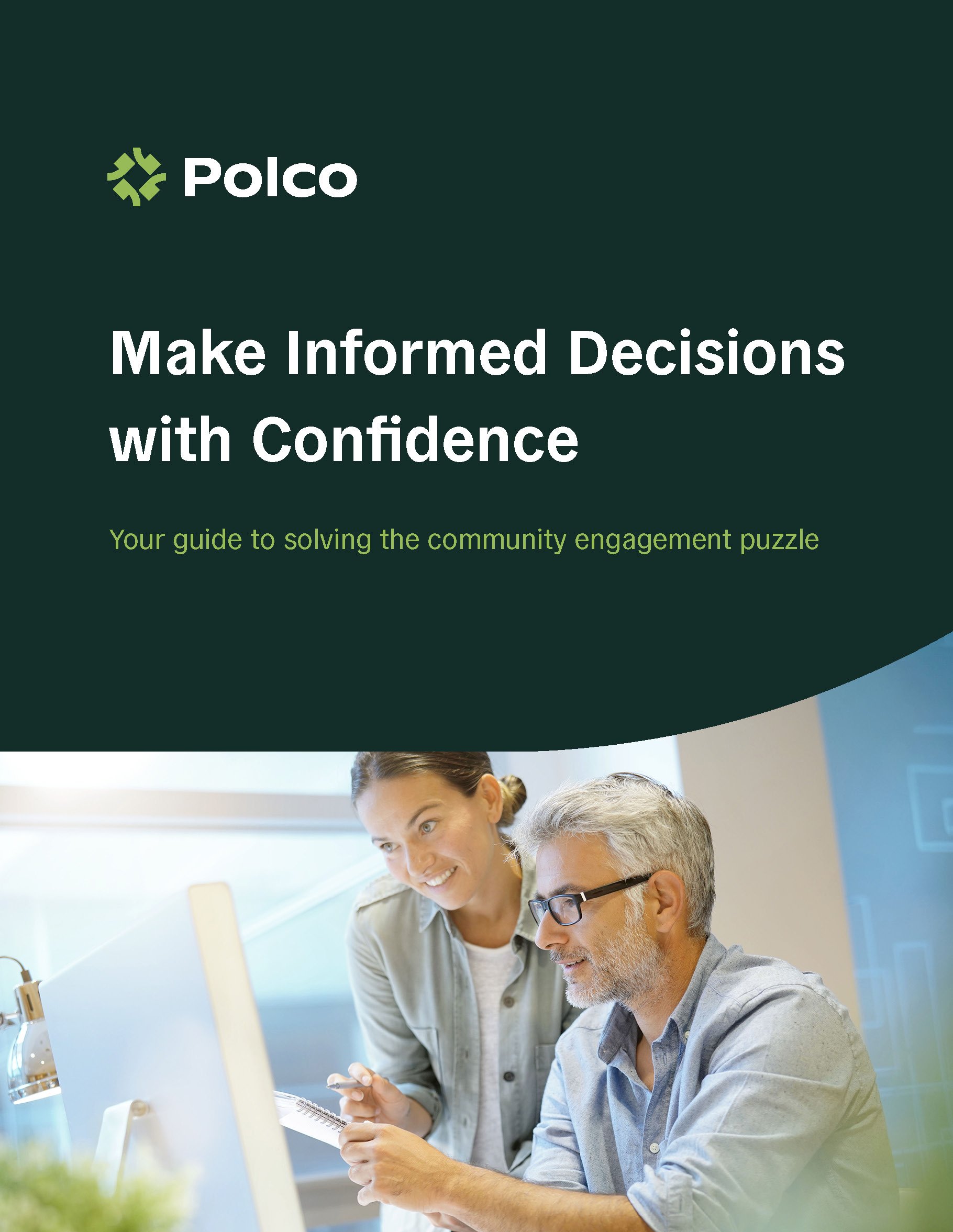Share this
Subscribe to Our Newsletter

Featured Report
Download your copy of "Make Informed Decisions with Confidence: Solving The Community Engagement Puzzle" today!
by NRC on January 24, 2017

-Webinar Show Notes-
A healthy organization depends on having satisfied employees. But how can managers make sure their staff members are taken care of? The good news is employers can get the answers they need to foster a better workplace by asking the right questions. Employee surveys are the most reliable way to gauge how your employees really feel and identify areas your organization needs to focus on.
These days, more and more local governments are collecting meaningful feedback from their staff. But before you get started on your own survey, you’ll want to see this webinar on the Top Ten Things You Should Know About Employee Surveys. National Research Center, Inc. (NRC) Vice President Michelle Kobayashi, the featured speaker, is an expert in the survey research industry. She has traveled the country, leading workshops and presentations on employee surveys with municipalities and has also published literature on the topic. In this webinar recording, Michelle talks about how employee surveys can make your organization better, the best ways to conduct them and what to do with results.
What’s a bellwether? Bellwethers can be described as indicators or predictors of the state of their environment. Consider the relationship between white roses and wineries; though both known for romance and beauty, the roses serve as a bellwether to the wine grapes. Farmers plant roses throughout the vineyard because they show signs of disease and frost before the grapes do. This allows the farmers to protect the grapes before any kind of irreparable damage strikes. Likewise, surveys of any kind, especially employee surveys are bellwethers to their organizations. They indicate the condition of an issue so you can make smart choices to fix that issue before it becomes a bigger problem. It is best to measure the condition your organization is in, quantify the data and use the results to address any issues that arise.
Typically, employee surveys have a lot of questions about job satisfaction, compensation and performance evaluations. In more than 20 years of conducting employee surveys, NRC has found there are many characteristics of organizational culture that are equally important to measure. Survey questions for these characteristics could ask about development opportunities, the physical work environment, communication and decision-making (just to name a few).
We have migrated from an industrial age to an information one, and surveys need to change with the times. Today’s employees need 21st century skills to be productive. These skills can be grouped by the four C’s: Collaboration, Critical thinking, Communication and Creativity.
Normative questions unlock the power of benchmarking! Comparing data collected from employee surveys over time brings context to your results. Also, comparing your results to industry norms allows you to identify what areas your organization needs to make the biggest changes in.
Whether you should ask background questions about age, ethnicity, gender, how long an employee has worked there, etc. depends on your intentions with the answers to those questions. The main reason for asking these types of questions is to compare and contextualize the results. For instance, if you want to know about inclusivity of diversity initiatives, you may want to compare male to female, or minority to majority race responses. No matter the type of inquiry, don’t ask any questions you don’t need answers to. (If you are painting the kitchen green and absolutely no employee feedback will change this, don’t ask if you should paint the kitchen green on the survey.)
People are cautious of surveys if they feel their responses may be traced back to them. If employees feel their job or reputation could be at risk, they may not be completely honest with their answers. For this reason, NRC hires an external party to administer our annual employee survey so staff feel comfortable and confident in the anonymity of their answers. When launching the survey, it’s important to communicate to employees that all responses will remain anonymous, from collecting answers to the aggregate presentation of results.
Web-based employee surveys are beneficial for several reasons: lower cost of administration, timely return of data and guaranteed anonymity. Web surveys require email addresses, and with employee surveys, you likely already have that information.
According to The National Employee SurveyTM (The NESTM), 87 percent of local government employees are satisfied with their jobs. NRC has a vast database with this type of data spanning decades that you can compare your organization’s results to. Across all industries, areas like communication, decision-making and employee performance evaluations historically tend to trend low. However, overall job satisfaction and work group performance typically receive higher ratings.
Negative perceptions of employee surveys often brew when management hides lower ratings or does nothing with the results. Instead, leadership should see lower ratings as opportunities to demonstrate transparency and focus on areas for improvement. Managers should also share high ratings to highlight where employees feel the company is excelling, and build on those strengths.
One of the worst things an organization can do with an employee survey is to conduct it and do nothing with the results. This causes company morale and trust in management to suffer. Instead, use those results to make a plan, and share that plan with employees. Better yet, bring staff into the planning process. Consider survey responses to identify a couple areas to work on. Then organize sub-committees to hash out solutions throughout the year. This empowers employees to take ownership of their part in changing the organization.
After receiving results from our own employee survey, NRC held a company-wide Next Steps Workshop discussion. We talked about what surprised us, what intrigued us and into what areas we wanted to dig deeper. By including all staff in the discussion, we were able to create several sub-committees to focus on areas such as telecommunication technology, group decision-making and more. This has empowered employees to take a more meaningful stake in the success of NRC.
Related Articles

Download your copy of "Make Informed Decisions with Confidence: Solving The Community Engagement Puzzle" today!
These Related Stories


